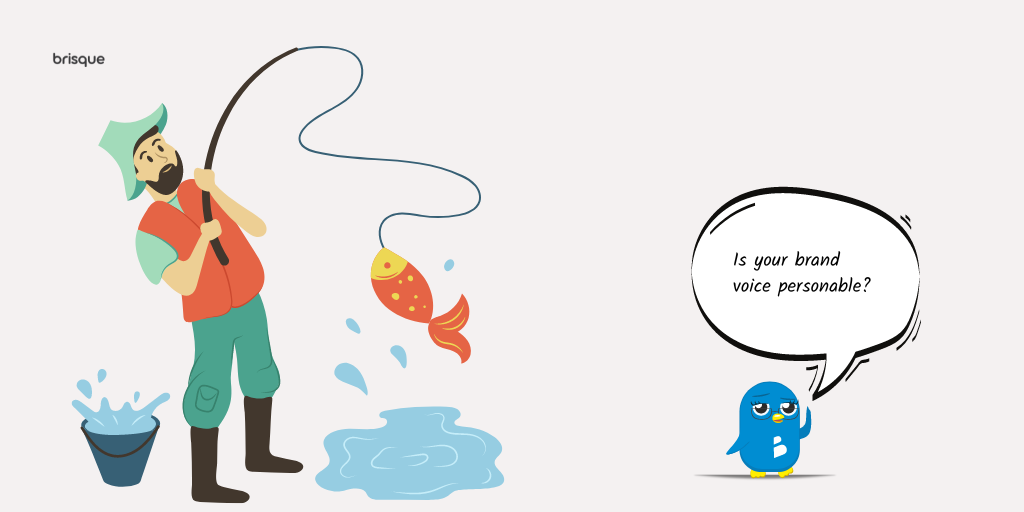Summary
SaaS marketing involves being able to communicate the value of a product effectively. When a potential customer perceives a solution as a must-have, there is often a better chance of making a sale. In this post, we look at tips for transforming your SaaS product from sounding like a nice-to-have to a must-have.
Quick Links
One of the biggest challenges in marketing a technology solution is to be able to demonstrate the value of that solution to your potential end-users. For Software-as-a-Service (SaaS) businesses there is often the need to communicate why a solution is a need or a must-have and not just a want or nice-to-have. Sometimes the difference between closing a sale quickly and having a long drawn out sales process lies in the perceived value of your product.
The key element to note here is that customers are often not in a position to be able to make a good business case for a solution that sounds like something that is nice-to-have and not a must-have. Must-have solutions tend to be more of a necessity, and as a result, it’s often easier to get a user to buy the solution. Your goal, in every sales and marketing initiative, is to ensure that the potential end-user thinks of your solution as a must-have and not a nice-to-have.
Read Also: Proving Marketing ROI: Why Should I track Micro and Macro Marketing Metrics?
6 Tips for Marketing Your SaaS Product as a Must-Have
So, the question is, how do you market your SaaS solution in a way that makes it a must-have and not a nice-to-have?
1. Make sure that you are building something that people need
Let’s start with the basics. Before you start marketing your new SaaS product or feature, ensure that you are building something that people need. Not just something that people think is cool to have, but a solution that they will deem essential to their everyday life. Ideally, you want to do this at the initial stages, and then, refine your concept of your product before building your final product. In our previous post on the importance of customer feedback, we touched upon this concept.
In this post, we’ll outline a step-by-step approach to ensuring that you validate your product or idea:
Step 1: Identify the pain or challenge that your solution is solving
Step 2: Identify who has the challenge that you are solving
Step 3: Identify how the audience is solving this problem today and why your solution is so much better
Step 4: Validate the problem by getting feedback from your potential customers.
In this survey, you can include other questions if you’d like to, but the main goal is to find out if the prospective users are struggling with the problem that you would like to solve. This type of feedback is even more robust if you do this using an open-ended question than a ranking or multiple-choice survey.
For instance, if you are thinking of creating the latest and greatest project management solution, you could ask your target audience of project managers, the open-ended question of: “what is the biggest challenge that you have with managing projects?”
Step 5: Ensure that your potential users are solving the problem that they have today in some other fashion.
Ideally, you want to find out that you are addressing an issue that is worth solving. Meaning, the people that could use the solution today are using something else to solve their problem that may not be as great as your solution. In my project management solution example, it could be that the project managers are using Excel spreadsheets today or even a competitor’s product. If the potential user is still struggling with a challenge even with a competitor’s product, it shows an opening.
Bonus tip: you don’t need to ask your customer about how they would like to solve the problem. Your job as the solution inventor is to use the feedback you receive and build something that goes beyond what potential customers might have dreamed of.
Don’t reverse engineer unless you have to. As you may have noticed, the steps above does a little bit of reverse engineering. I took the approach of thinking about the steps for a company that already has a developed SaaS solution. In that case, as the SaaS solution provider, your goal is to find out how to ensure that marketing messages align with what customers see as relevant. In a perfect world, you would start with getting information on the industry. Get to know the kind of challenges your potential customers face today before deciding to create anything for that target audience.
2. Find Out What’s Most Important to Your Customer’s and Use That as a Draw
Now that you have the data on the challenge that customers are facing, your next step is to ensure that you can find a common thread.
Things to look out for:
- Is there a common challenge theme?
- Is that a problem that your solution solves?
If there is a common problem and your solution solves that problem, then, boom! You are on to something.
Your SaaS solution might be able to do twenty different things, but at the end of the day, you don’t want to spend time or resources leading with all twenty features if there is one that customers need. You can mention all the other amazing things that your SaaS solution can do after you have been able to draw the potential customer in.
Read Also: 11 Technology Marketing Strategy Examples to Learn from Uber’s Move to Grocery Delivery
3. Communicating Pain + Solution = Why; Not What
Next, you have to be very meticulous with crafting your SaaS marketing message. Focus more on communicating the pain and show that you understand the pain. Then, you can talk about how your solution solves the problem. In our Human vs. Robot Marketing Messaging Series, we share examples of how to transform messages from technical-sounding to relatable. Don’t focus on discussing your features without helping customers understand why the features are needed in the first place. As a potential customer begins to understand why your solution is needed for solving a pain, the solution starts to transition from something nice-to-have to something that you must-have.
View Strategy: Stand Out in a Sea of Robotic Sounding Humans
4. Use Relatable Easy to Understand Language
Ensure that your marketing message is not heavily riddled with technical I.T. jargon that doesn’t communicate why your solution solves the pain that the potential customer is having. Whenever you come up with your SaaS marketing message, ensure that you take a second pass at the message to do what we call the human-check.
Here’s the human check question; “will my great aunt understand this message if I read it to her at the family barbecue?” If no, then go back and make edits. It’s understandable that depending on your industry, specific terms are unavoidable. Remember, all the features that you mention are how the solution solves the problem, not why. What you want to focus on the most is why the solution solves the problem. Even with your features and technology platforms, you should ask yourself the question: “why should anyone care?” For example, if your solution uses artificial intelligence (A.I.), why should anyone care? What does A.I. do to make the customer’s life better?
Related: [Video] Human vs. Robot: Episode 1 – The A.I. Machine
5. Demonstrate the Dream – Create a Wow Feeling of Possibilities, and Spend a Good Amount of Time Building Demo Scripts
Your SaaS product demos are the dream. For you to sell the dream, it has to look exciting. Sometimes the initial communication works out, but when you see the demo of the product, you get lost. The demo of any SaaS solution is an extension of the core marketing message that you have crafted to help sell your solution as a must-have. As such, you have to ensure that you spend a reasonable amount of time, not only making your product demos look visually stunning but also training everyone on your demo team on how to connect the problem to the solution. You don’t want to quickly jump into showing features and expect the customers to connect the dots.
Read Also: [Video] Human vs. Robot: Episode 2 – 24/7 Managed I.T. Services
6. Stop Using Inflated ROIs And Use Real Stories of People’s Experiences
Finally, stop using inflated Return on Investment (ROI) numbers and use real stories of people’s experiences. As we all know, numbers can be presented in a way that doesn’t show you the full picture. For example, you can say you were able to increase sales conversions by approximately 67%. While this sounds great on the surface, an increase in sales conversions from 3% to 5% is approximately a 67% increase in conversions. It’s obvious in this equation that using 67% sounds better than saying conversions increased from 3% to 5%. This reality these days have made a lot of customers skeptical of ROI numbers, unless your solution is something they’ve used in the past and can vouch for the anticipated return. Instead of focusing so much on ROI numbers, you could take a different approach to creating a sense that the customer is not alone. Share stories about how a similar customer in the industry solved the problem using your solution and sell the dream on how their life is different now.
Example of a customer story that takes the approach of creating a connection and selling the dream:
Salesperson: “One of my customers had twenty different project managers and was struggling to keep track of all their projects. Since she implemented our solution, none of her project managers have delivered a project that wasn’t on-time because there is better communication across teams.” (This creates a better picture of what your life could look like if you were to implement the solution.)
Here’s what you could say instead if you are leading with ROI numbers
Salesperson: “One of my customers had twenty different project managers and was struggling to keep track of all their projects. Since she implemented our solution, she’s had a 100% project delivery rate.” (This sounds great, but you don’t see a clear picture of what your life could look like with the new solution.)
In the end, SaaS marketing can be challenging. The real challenge often lies in the disconnect between the pain and the solution. If you can unravel this disconnect, you are more likely to connect with your customers in a way that makes them feel like your solution is a must-have and not a nice-to-have.






